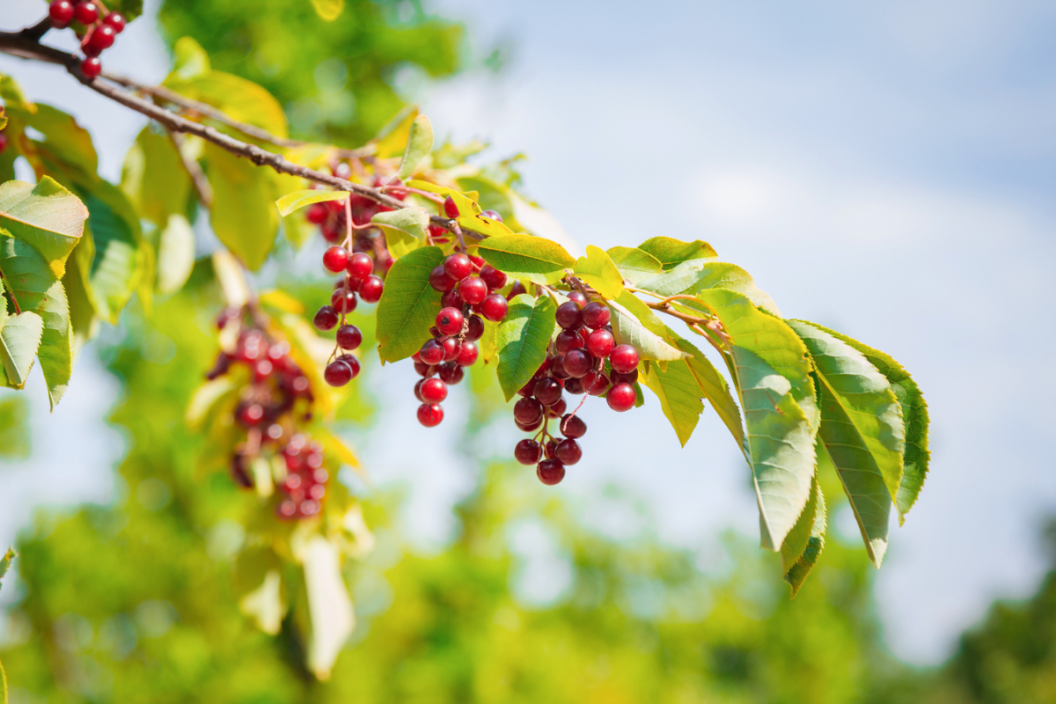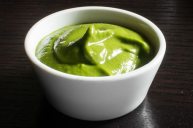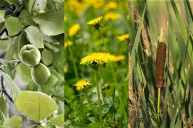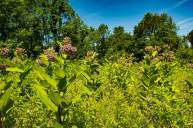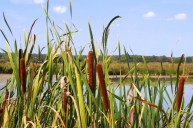It's a warm morning in late summer and you're up early to hit your favorite trout spot. Parking in the pull-off, you notice that the bushes lining the short path down to the water are now dripping with dark purple berries. Birds perch on the branches, popping the small, cherry-like fruit off with their beaks. You recall a bit of your plant ID knowledge, remember eating your mom's homemade jam as a kid, and smile a bit as you realize they're chokecherries. You pop one in your mouth just to remember the astringent flavor. Chokecherries are my favorite wild berry to harvest. Easy to identify, these plentiful fruits can be made into a delicious jam, syrup, or juice. Personally, I make a mean chokecherry pancake syrup, and I've made preparing it an annual tradition.
As a disclaimer, you should be fully confident in your plant ID skills prior to consuming any wild berries. Although chokecherries don't have any deadly lookalikes and don't have any plants that look nearly identical to them, it's really important to know exactly what plant you're looking at prior to putting it in your body. That being said, here's how you can identify these mouth-puckering berries in your neck of the Rockies.
Identifying a Chokecherry Tree
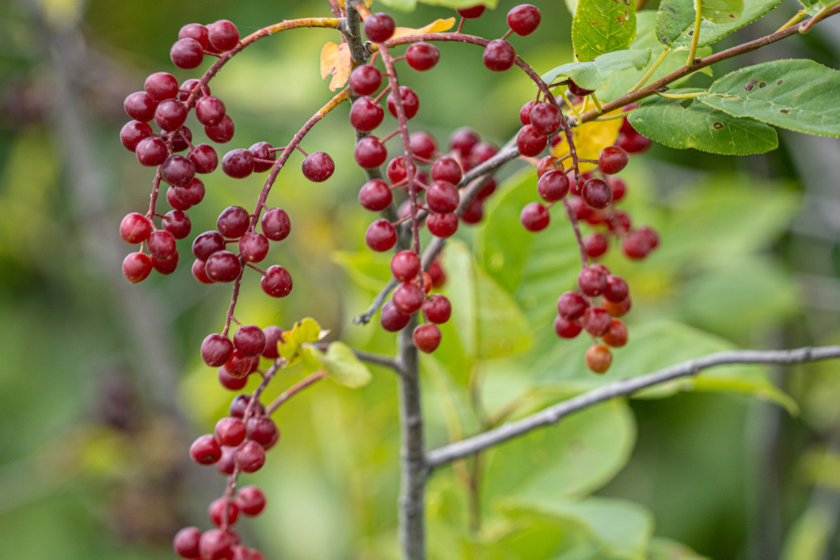
Chokecherry plants are deciduous and can be either very tree-like or shrub-like. They max out around 30 feet in height. Typically, they have long, sucker-like branches tipped with leaves, giving the shrubs a rounded but irregularly-shaped crown. Each dark green chokecherry leaf is ovate in shape and has slightly serrated edges. Similar plants will not feature these serrated leaf edges. Leaves can be three to six inches in length. Look for little hairs on the underside of each leaf, too. In the fall, their leaves turn into a rich orange or deep red color.
Chokecherry tree bark is smooth and gray, not reddish-brown. They also have white lenticels which are pores on woody plants that are slightly raised. Lenticels allow for gas exchange between the plant and the surrounding air. The thin bark may split or form shallow grooves, too.
Five-petaled chokecherry blossoms are white in color with yellow centers and are strung out along a raceme. Racemes are clusters in which each flower has its own stem. The flower stems are identical in length and equally spaced along the central stem. Chokecherry racemes can have 20 to 50 flowers that will mature into berries if fertilized.
Actual chokecherry fruits begin to form in late June or early July and typically ripen in late July or early August. Ripe chokecherry drupes, or a fruit with a thin skin and a seed in the middle like a plum or peach, range in color from dark red to deep purple. As you probably assumed from their name, raw chokecherries are very bitter and can make your mouth feel dry.
Don't eat raw chokecherry seeds, though; seeds contain cyanide and can cause gastrointestinal distress. Don't let your dogs eat a ton of raw low-hanging fruits or raw cherries from the ground, either, unless you want to take a trip to the vet. However, you can keep your raw seeds and use them to plant more chokecherries in the springtime.
Additionally, do not ingest the leaves, bark, or other parts of chokecherry plants raw; they contain cyanide in them, too. However, most folks agree that the poison breaks down after the plant material is cooked.
How to Harvest Chokecherries
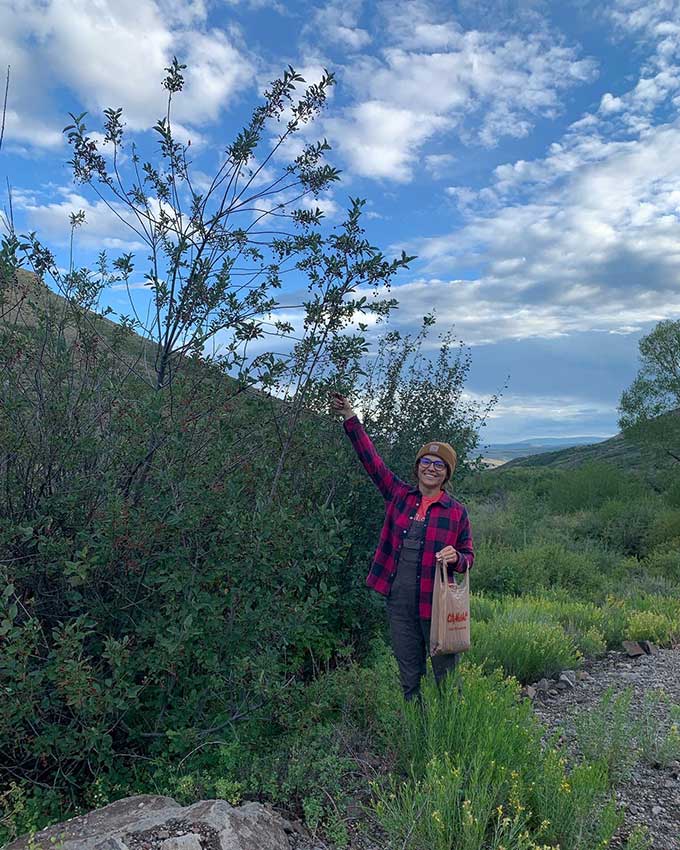
Gabriela Zaldumbide
Once the chokecherry drupes are very dark red or even purplish-black in color, they are ready to harvest. I like to use leftover grocery bags to collect them, but you can get fancy woven foraging baskets or use any container you'd like to store them in. I'd recommend using large Tupperware so you can slap a lid on it and stick it in the fridge. I simply tie my grocery bag shut and stick the drupes in the freezer until I'm ready to make syrup.
Ripe drupes should easily fall off the raceme. Picking berries individually is slow; I generally hold my bag below the raceme and use my other hand to pull the fruits off the stem in one movement. This way, I can pick many berries at one time and efficiently fill a bag with ripe fruit. I go back and pick out the leaves, twigs, stems, and bugs when I'm back in the kitchen and prepping my syrup.
How to Make Chokecherry Syrup
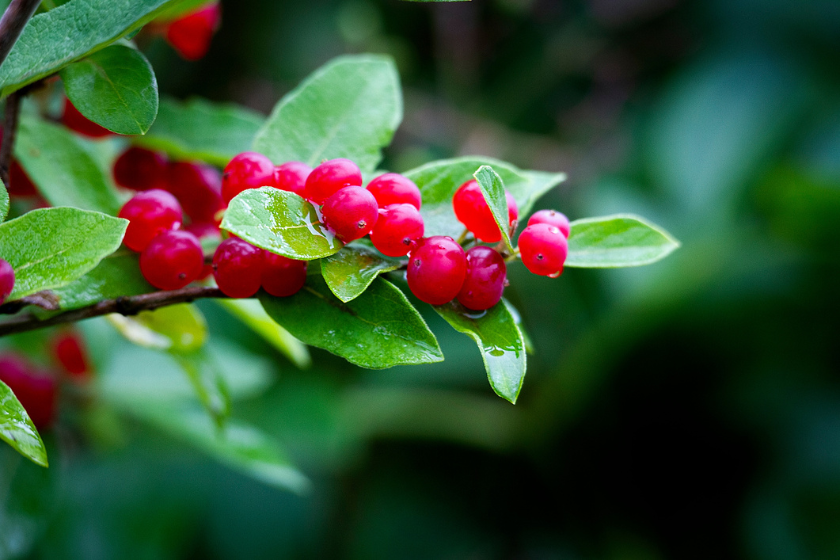
Like any stone fruit, there are tons of things you can make with your chokecherries. Jams, spreads, preserves, syrup, infused vinegar, juice, ice cream, and even wine are a few popular recipes foragers like to make. I like to make syrup. It's basically like making jam, but even easier.
To make syrup, you'll want a ton of chokecherries. I usually pick two or three grocery bags full, or anywhere from five to six pounds. This many berries makes just one quart of juice, which will be the base of your chokecherry syrup.
Simply add your berries to a covered saucepan with some water in the bottom and cook them until the berries are fully broken down, or about 15 minutes. Be careful not to crush the pits while stirring.
After the berries have broken down, strain them through a fine mesh strainer or cheesecloth to remove the pits and skin fragments. The remaining cloudy juice will be very bitter, so if you want to leave it as juice, feel free to add a sweetener like sugar or honey to make it more palatable.
If you're continuing on to making syrup, measure your juice in cups. Add your juice back to the saucepan as well as 1/2 to 1 cup of sugar for every cup of juice; the less sugar you add, the stronger the chokecherry flavor will be. I recommend staying on the lower end of this spectrum. You can always add more sugar later if it's too bitter, but you can't take the sugar you've already added out.
Bring your juice and sugar to a boil and stir until the sugar is dissolved. Once it's dissolved, remove it from the heat. If you're going for a thicker syrup, keep it on the heat a bit longer. Chokecherries are known for having quite a bit of pectin in them. Pectin is a natural thickener present in many stone fruits. The longer you cook the syrup, the more the pectin will "gel" your syrup.
Once your syrup is cool, give it a taste. Too bitter? Add more sugar. Just right? Stick it in a jar and store it in the fridge. Put any extra you have into the freezer, or if you want to be really cool, properly can it and store it in your pantry. Your syrup will last for a few weeks in the fridge, 12-18 months in sealed jars, or indefinitely in the freezer.
After your chokecherry syrup is complete, cook up some pancakes, crack open a jar, and smear your wild syrup all over those babies. Or, if you're feeling a little wild yourself, mix a gin cocktail and add a spoonful of chokecherry syrup. On a hot August evening with a cool drink in your hand, you'll be thankful you spent those hours hand-picking berries along your favorite creek.
